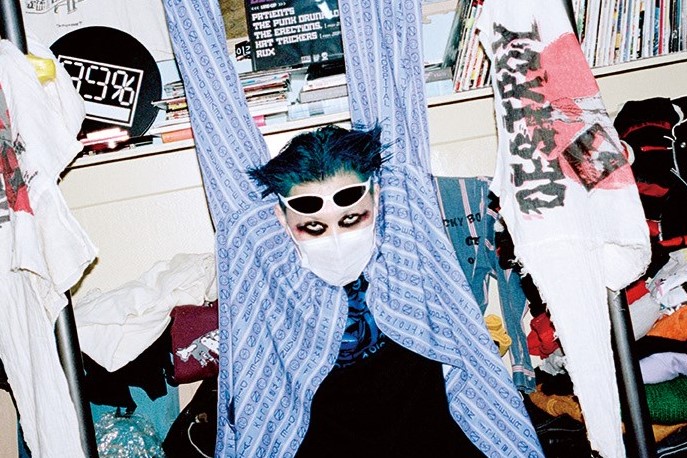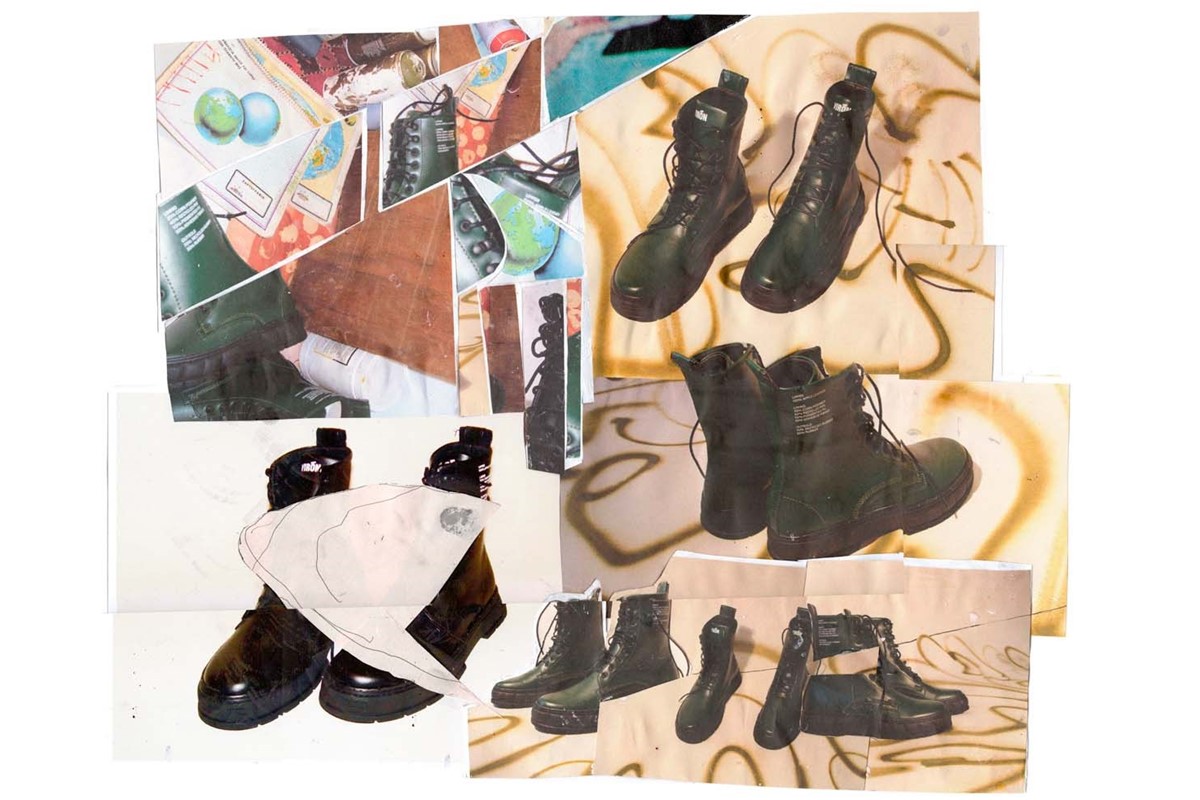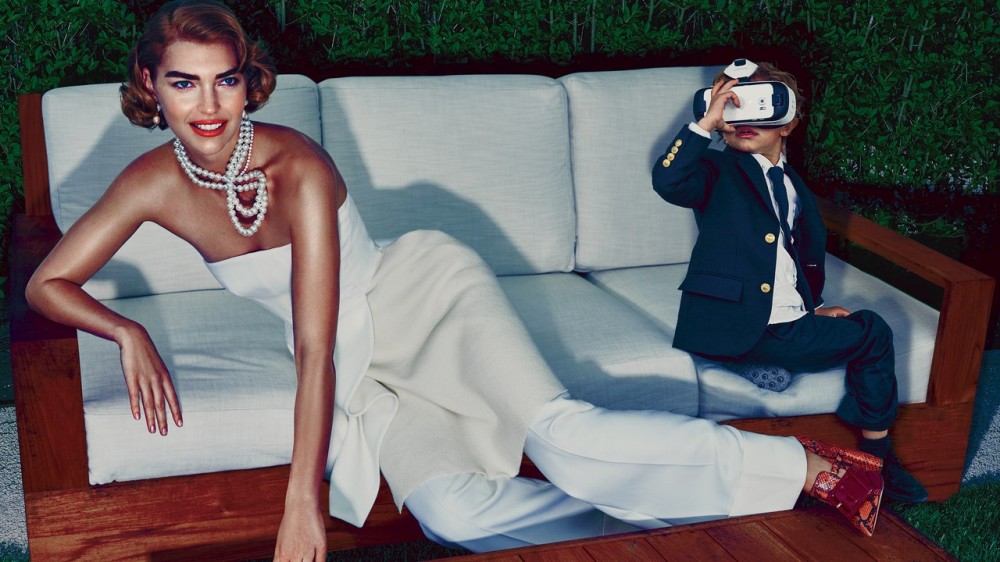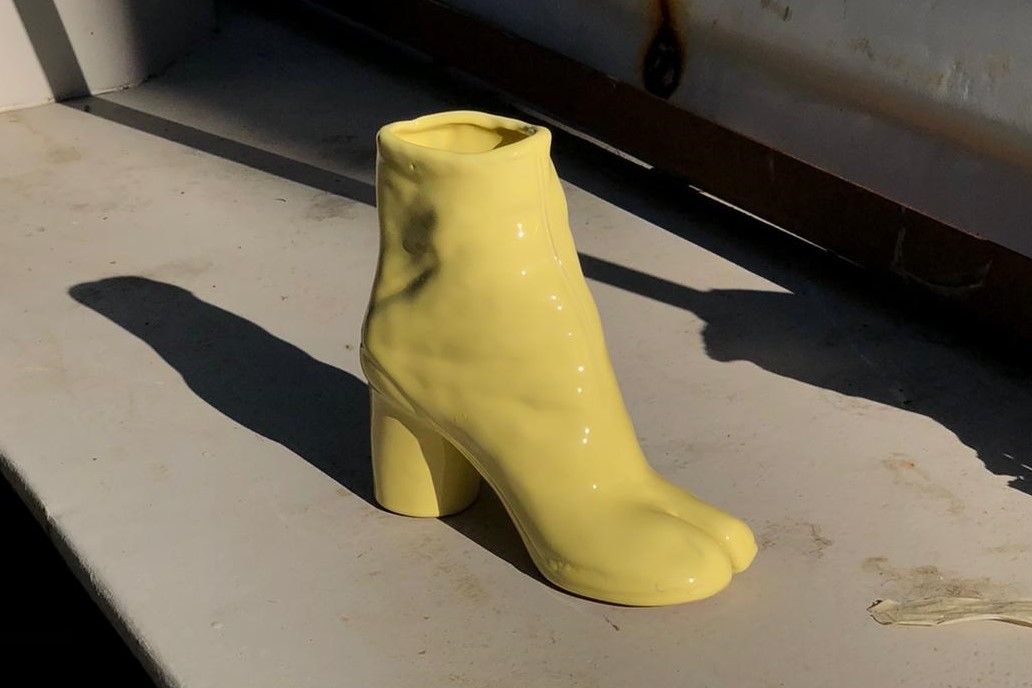
From Korea to the catwalk: how K-pop’s idols took over fashion
New book Make Break Remix takes a deep dive into the cultural juggernaut’s impact on fashion and beyond
As K-pop exploded over the past decade into a commercial music force equal to that of those in the west, so too has its power within fashion.
Once known for its matchy-matchy, inoffensive costumes, K-pop’s biggest icons are now more aligned with coveted luxury houses and streetwear labels both on and off stage. Members of BLACKPINK, aespa, BTS, and EXO are global brand ambassadors for the likes of Givenchy, Celine, Gucci, Saint Laurent, and Dior, while NCT Dream’s Jeno became the first K-pop star to open an NYFW show, as he took to the runway as part of Peter Do’s SS23 show in September.
All that is Korean has soared in popularity in recent years, with its culture celebrated across all four corners of the globe. But if K-pop and all its elements are a dizzying melting pot of influences drip-fed through pop, rock, electronica, R&B, and hip hop, then K-style, its overarching cultural parent, is an even more mind-boggling array of influences.




According to writer Fiona Bae in her new book Make Break Remix: The Rise of K-style, this intimidating melee is born of South Korea’s tangled political, cultural, and financial histories. It is, however, often rendered frustratingly abstract by the practice of affixing a ‘K’ to its every export. K-style, says Bae, is an overused catchphrase for a vast array of creative disciplines, such as chefs, product designers, filmmakers, musicians, choreographers, fashion designers, architects, artists, and photographers, many of whom wrestle with this vague two syllable concept as defining what they do.
Bae’s subjects include designers BAJOWOO and the women-owned clothing brand MISCHIEF. “When I told them I was doing a book about K-style, they were like ‘What?’” recounts Bae, who was born and raised in South Korea, and now lives in London. “I explained I wasn’t trying to define K-style but chose them because I believe they’re doing something brave. K-style is such a contrast and a mix, so I wanted to show the eclecticism of Korean creatives. It’s like when people say ‘New York style’, people have an image of being aggressive and confident. So [in relation to K-style], let’s talk about young Koreans’ attitude.”

South Korea’s path to being a global financial player isn’t much older than some of the creatives interviewed. In its democratic infancy during the late 80s, South Korea would copy popular Japanese and American products to boost its commercial exports while, culturally, a “herd mentality dominated”. Indeed, K-pop’s earliest roots are in 90s groups like Seo Taiji & Boys, whose sound is indebted to American hip hop but tweaked to reflect their experiences as Koreans, a practice Bae calls a “remixing of culture”, which still informs and influences K-pop in 2022.
This unique ability to “make, break, and remix” has birthed incredible talent via South Korea’s underground, and here, as Bae’s book gets its release, we sit down to discuss the past and present of South Korean culture, and the wild creative leaps made by a country that went from one of the world’s poorest to a giant of modern culture in just three short decades.
“I think most K-pop labels are very proud of the influence they have but the majority are driven by what will make them commercial successes. So rather than going more avant-garde, they will make a safe bet that will appeal to more people” – Fiona Bae
We should start with the power that is K-pop, whose visuals and styling have shifted dramatically over the past ten years. How has the changing culture in South Korea brought this about and, in turn, how are its idols changing the fashion landscape for Gen Z?
Fiona Bae: G-Dragon (Big Bang) started that [change] when he became Chanel’s ambassador (in 2017) and Serian Heu (former Digital Director at Vogue Korea/current Visual Director at HYBE) talked to me about how K-pop stars are now appearing on covers even more than Hollywood actresses. Other people I’ve interviewed have said how K-pop stars are becoming more individualistic while in the past their looks were dominated by what their agency told them to wear. Increasingly, they make their own choices and some entertainment labels have realised they can’t continue churning out similar looks. People are looking for something different all the time. Increasingly independent choices made by artists have a huge impact on what Gen Z wear, not just in Korea but globally. It’s not just fashion, though. Tattooist Doy says 25 per cent Koreans now have tattoos, whether it’s the eyebrows or somewhere on the body, even though you need a medical licence to tattoo. Young people don’t care, they learn about tattoos from their idols and they think it’s cool.
How would you describe the relationship between idols and brands?
Fiona Bae: Commercially, it’s valuable. Artistically? I think a lot of stylists, agencies, even artists themselves, don these high fashion brands because they believe it elevates their status. By being recognised by these brands and becoming ambassadors, they’re very smartly using them. But some fans will also want to discover new brands from young designers [through idols] and I think there will be some gradual changes. Some are wearing them and even though the press might be a little lazy in discovering who they are, there are young Korean brands who totally sell out in the same way when it’s discovered they’re being worn by idols.

Lim Kim, the founder of popular dance studio 1MILLION, says even now “K-pop is still centred around certain looks. Less than ten percent of artists have distinctive positioning”, and NCT’s stylist Kim Youngjin says he used to turn down working in K-pop because of the safe looks. He also made an interesting point about K-pop’s turnaround times being too fast to work with young designers. Because of K-pop’s enormous power and influence, should they be doing more for young or rising Korean fashion creatives?
Fiona Bae: I think most K-pop labels are very proud of the influence they have but the majority are driven by what will make them commercial successes. So rather than going more avant-garde, they will make a safe bet that will appeal to more people.
South Koreans still face overwhelming pressure to succeed, but only via an accepted path or through looking a certain way. What’s your own experience of growing up in South Korea?
Fiona Bae: I was very lucky, while my parents were very conventional and wanted me to become a doctor or a lawyer, they never really stopped me from doing what I wanted to. Korea is very repressive and oppressive in those regards. And even K-pop is like that, it’s not like idols are told, ‘You’re an artist, express your character’. It’s like, ‘We’ll train you in this way and you’re going to do this. Lim Kim talks about how Korean culture is very authoritarian and that enables those young kids to be [taught to] just obey, which would never be possible in the US. As many in my book pointed out, for K-pop to have lasting success, it will have to diversify.
“Social media is so democratic, and [young designers] don’t need that formal training, they can just absorb what they think is cool, they’re becoming more confident, and they think, ‘I can just teach myself’. It’s not mainstream yet but it’s happening more and more” – Fiona Bae
Another point I took from ‘Make Break Remix: The Rise of K-style’ is how all these creatives either grew up in Seoul or moved there because they couldn’t be themselves in their hometowns. What’s currently happening in the rest of the country, creatively?
Fiona Bae: There are efforts to move creativity outside of just Seoul. Recently, Busan, Daegu, and Jeju Island are really flourishing. Lee Kwangho (an artist and designer) wanted to explore more of real Korea because Seoul is too international, and he fell in love with Jeju Island and moved there. Jeju used to just be known as a nice resort but now it’s becoming artistically interesting with lots of museums and galleries. Things aren’t moving fast enough, even though everything generally moves so fast in Korea, but I think we’re seeing gradual changes. I don’t really believe in the role of the government [in creative industries] but there are some things they do quite well, like they’re building five museums in Sejong, which is where they moved the central government. They realised that to draw in young people, you need to make it a cultural hub.
The Korean ability for speed in all that they do is lauded by your interviewees as a reason for the country’s rise in a short time, but also seen as detrimental because there’s no time to create depth. Without depth it becomes harder to create individual legacies. What’s your take on this?
Fiona Bae: Speed has been a driving factor in making Korean culture successful but it can break the whole society. It creates so much stress and competition, which isn’t healthy. But a lot of people I interviewed, they’ve discovered their own rhythm. They’ve realised that for them to create something really original, they can’t be driven only by external forces and they have to go with their own tempo. BAJOWOO has been criticised by many for not doing two collections per year but he says he just can’t, it takes so much energy to create, but he doesn’t care that it misses out on the norms of the fashion industry. That’s bold. A lot of artists in my book aren’t going for commercial success, and I really respect them. They’re not looking for what they think will bring them fame, they’re just doing it because it’s their passion and what they think is original. That genuine belief makes them stand out and gain a following.

There’s always been a strong international Asian student body at Parsons School of Design or Central Saint Martins, but is there a seachange coming in fashion that will see more students learning on home turf?
Fiona Bae: Take PAF (Post Archive Faction), for example, which will be stocked globally in Dover Street Market this autumn. They’re one of our leading streetwear brands yet the founder never studied fashion or left Korea, but if you look at the brand, it looks so international. Lots of young people respect that, and they don’t care where you went to school or who you’ve worked for. Social media is so democratic, and [young designers] don’t need that formal training, they can just absorb what they think is cool, they’re becoming more confident, and they think, ‘I can just teach myself’. It’s not mainstream yet but it’s happening more and more.
Your book includes drag artist and YouTuber Nana Youngrong Kim, who noted being openly in drag made some of the LGBTQIA+ community angry because “they were afraid a loud gay like me might bring them harm”. If more creatives who buck social norms emerge and are open about their gender and sexuality, do you see a change against the still widespread homophobia?
Fiona Bae: I’m optimistic in that regard. (Tattooist) Doy was saying that for young people, if you’re seen as unjust and unfair on social media, it’s a taboo, and they try to educate themselves and drop the prejudice. So as long as there is enough information and some brave artists who are showing who they are, then there are positive signs. But at the same time, there are rising tensions between young men and women around feminism, and there are very worrying signs on social media where young people either love someone or loathe them, it’s very black and white, and it can be detrimental.
“I remember when I was at university, if I was smoking on the street, old people would follow me and try to slap me! MISCHIEF and Lim Kim are really vocal about not following this image of women [created by] men and society, and I think women take comfort from them and want to join in” – Fiona Bae
MISCHIEF’s two women founders/designers note that there are now more women in creative subcultures than men. Why is that?
Fiona Bae: They love the rebellious spirit. Women are told to be obedient and feminine and there’s certain expectations of women in the workplace. I remember when I was at university, if I was smoking on the street, old people would follow me and try to slap me! MISCHIEF and Lim Kim are really vocal about not following this image of women [created by] men and society, and I think women take comfort from them and want to join in.
The word ‘subculture’ feels like an umbrella term, perhaps in the same way that ‘K-style’ is. Is subculture one thing in Korea or many?
Fiona Bae: I think it’s definitely many things – whether it’s hip hop, punk, Korean rock, Korean electro. But I think more than anything else, it’s an attitude. To go against the mainstream, to be more original and be rebellious against the cultural norm.




